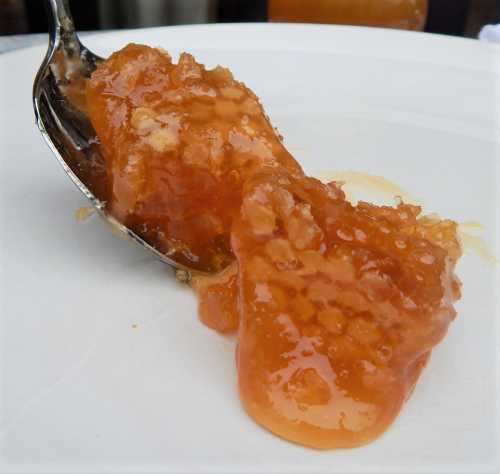Honey For Burns
Can honey be used to heal burns, and is there clinical evidence to support its use?
Honey is well known for its anti-bacterial properties, but is there quality, sufficient evidence to support the use of honey for burns?
The short answer is:
Yes, there are at least 2 studies presenting quality evidence gathered from human patients, which demonstrate that honey dressings can actually heal partial thickness
burns more quickly than conventional treatments.
Honey for burns - the clinical research
A Cochrane review by Jull et al 2015, looked at 26 different trials involving more than 3000 patients that examined the use of honey in wound healing, of which 11 trials examined the use of honey for burns.
It is not clear from the review, which type of honey was used in each trial (for example, medical grade honey, manuka honey, etc).
Partial thickness burns affect the top two layers of skin, the epidermis and the hypodermis, and are often called ‘second degree burns’. These burns are more serious than first degree burns, because a deeper layer of skin is damaged and they are more painful and more prone to infection.
The reviewers (Jull et al) state that 2 of the studies, show what they describe as ‘high quality evidence’ that honey dressings heal partial thickness burns more quickly than conventional treatments.
These studies specifically looking at honey in burns, involve 992 patients – so they are not small and insignificant studies!).
Conventional treatments with which honey was compared, included:
- polyurethane film,
- paraffin gauze,
- soframycin-impregnated gauze,
- sterile linen,
and
- leaving the burns exposed.
Are there any risks to using honey for burns?
It was not clear whether or not there are fewer infections if honey dressings are used for burns instead of conventional dressings.
However, Jull et al examined ten trials (involving over 800 patients!) that compared the use of honey in burns with use of silver sulfadiazine (SSD) in burns, and found:
- There was low quality evidence from four of the studies that honey heals burns more quickly than the silver sulfadiazine.
- The other six studies provide strong evidence that, while there is “no difference in the overall risk of healing” for honey compared with SSD, interestingly, there is good evidence that there is an overall reduction in the risk of adverse events for honey compared with SSD.
So whilst the results look very interesting, the issue of infection and risk following the use of honey for burns would really need to be looked at more vigorously before it could be used on a wider basis. Robust trials are a key requirement of any advanced medical care system.
The authors concluded:
"Honey appears to heal partial thickness burns more quickly than conventional treatment (which included polyurethane film, paraffin gauze, soframycin-impregnated gauze, sterile linen and leaving the burns exposed) and infected post-operative wounds more quickly than antiseptics and gauze."
Should I use honey to treat my burns, and how can I use it?
Do consider the following points:
- Firstly, take a look at your burn. Should you seek medical assistance (especially for burns on a child or elderly person, or if there are any other relevant medical issues).
- If you have an allergy to honey, obviously you should not use it, even as a topical treatment.
- Competent health bodies, such as the UK NHS, point out that honey used in clinical settings, is medical grade honey. This means that, for example, it has been through a process to ensure it is not contaminated, and is presented in an appropriate format.
- Do remember, there have been a number of scandals around contaminated honey. For example, more manuka honey is sold than is actually produced! There have also been scandals of 'cheap' honey being smuggled from China into the West, containing anti-biotics and even lead.
On a personal note, I'm fit and healthy, and I would be prepared to try honey on a minor burn, but the choice should be an individual one.
References:
- Jull AB, Cullum N, Dumville JC, Westby MJ, Deshpande S, Walker N. Honey as a topical treatment for wounds. Cochrane Database Syst Rev. 2015 Mar 6;2015(3):CD005083. doi: 10.1002/14651858.CD005083.pub4. PMID: 25742878; PMCID: PMC9719456.
- Baghel et al: “A comparative study to evaluate the effect of honey dressing and silver sulfadiazene dressing on wound healing in burn patients.” https://www.ncbi.nlm.nih.gov/pubmed/20368852 Mashhood AA, Khan TA, Sami AN. Honey compared with 1% silver sulfadiazine cream in the treatment of superficial and partial thickness burns. Journal of Pakistan Association of Dermatologists 2006;16(1):14-9.
- Memon AR, Tahir SM, Khushk IA, Ali Memon G. Therapeutic effects of honey versus silver sulfadiazine in the management of burn injuries. Journal of Liaquat University Medicine and Health Sciences 2005;4(3):100-4.
- Subrahmanyam M. Topical application of honey in treatment of burns. British Journal of Surgery 1991;78(4):497-8. www.ncbi.nlm.nih.gov/pubmed/2032114
- Subrahmanyam M. Honey impregnated gauze versus polyurethane film (OpSite) in the treatment of burns - a prospective randomised study. British Journal of Plastic Surgery 1993;46(4):322-3. www.jprasurg.com/article/0007-1226(93)90012-Z/pdf
- Subrahmanyam M. Honey as a surgical dressing for burns and ulcers. Indian Journal of Surgery 1993;55(9):468-73.
- Subrahmanyam
M. Honey-impregnated gauze
versus amniotic membrane in the treatment of burns. Burns 1994;20(4):331-3. www.sciencedirect.com/science/article/
pii/0305417994900612?via%3Dihub -
Subrahmanyam M. A prospective
randomised clinical and histological study of superficial burn wound healing
with honey and silver sulfadiazine. Burns 1998;24(2):157-61. http://www.sciencedirect.com/science/article/
pii/S0305417997001137?via%3Dihub
Did You Know?
Toxic Honey Was Used In Ancient Warfare!

If you found this page helpful or interesting, I'd really be grateful if you would share it with others - if not this page, perhaps another, such as Gardening For Bees.
Thank you so much :) .